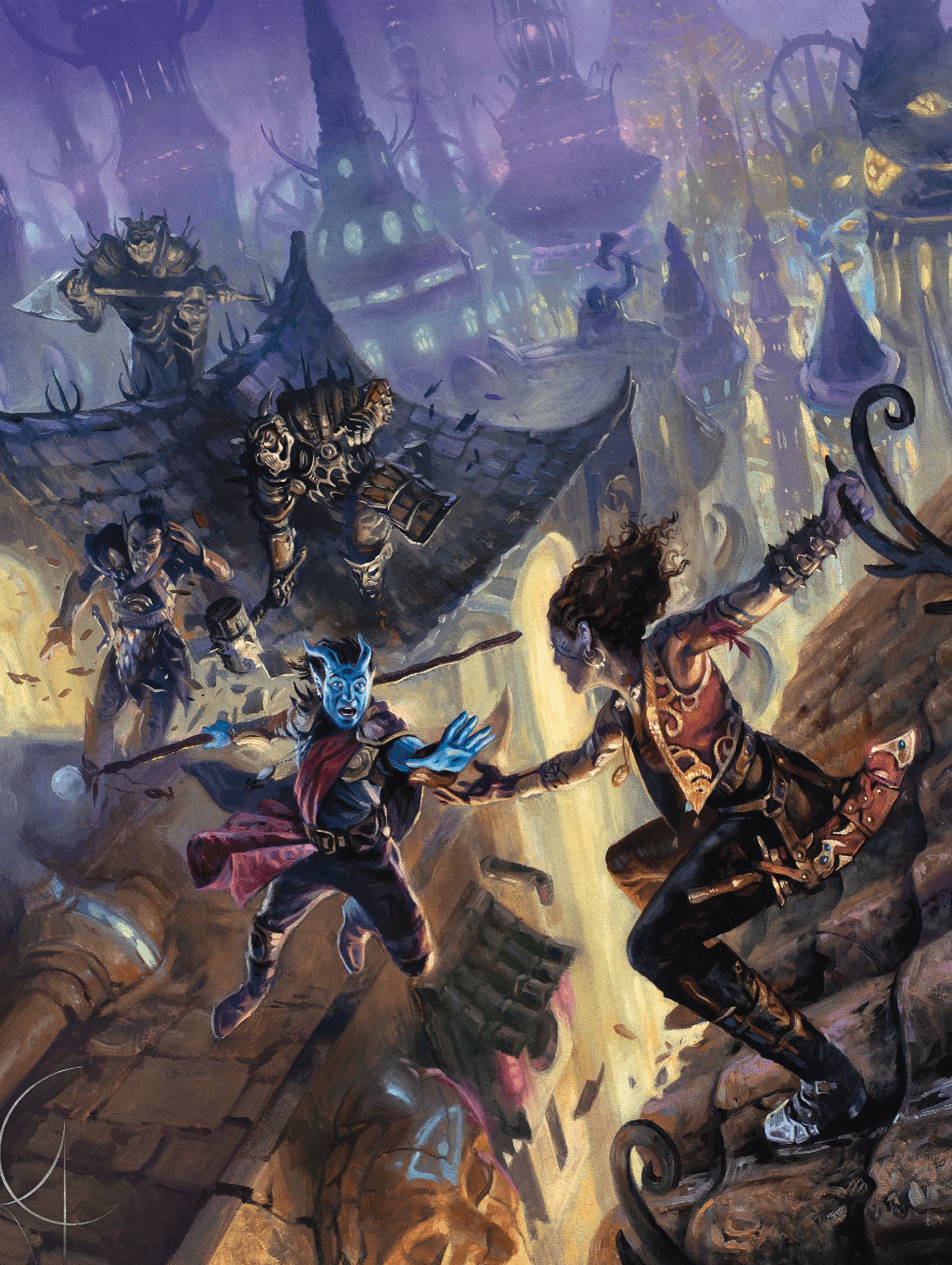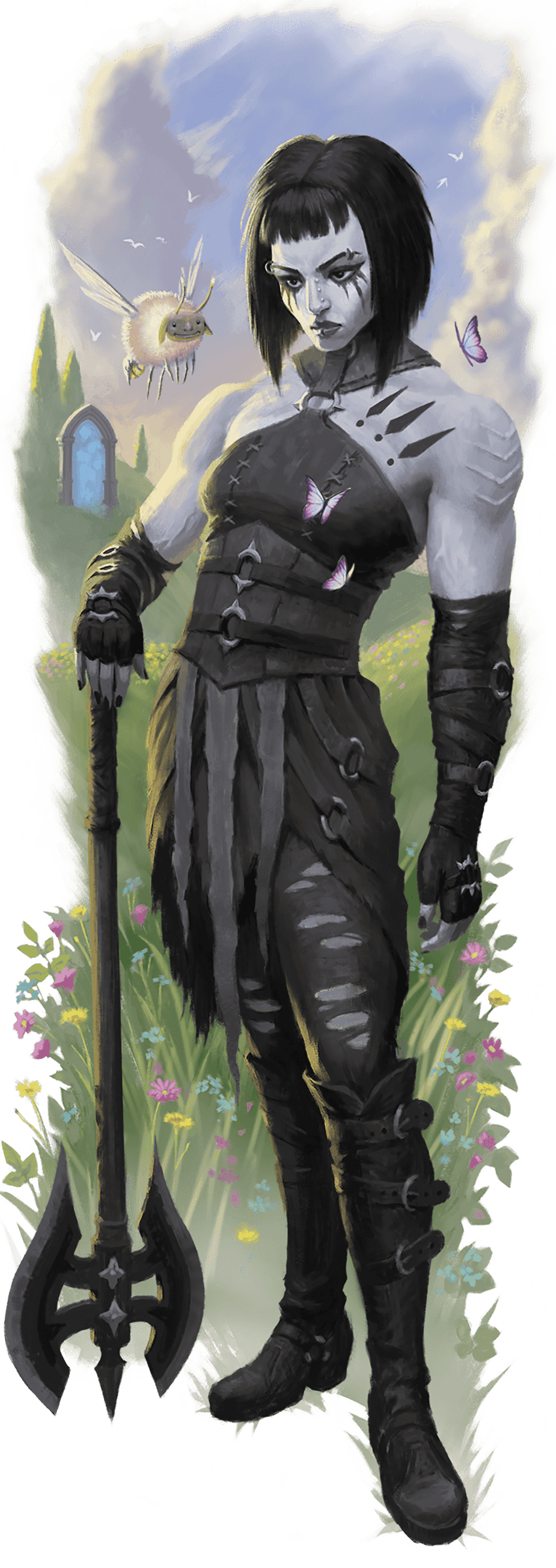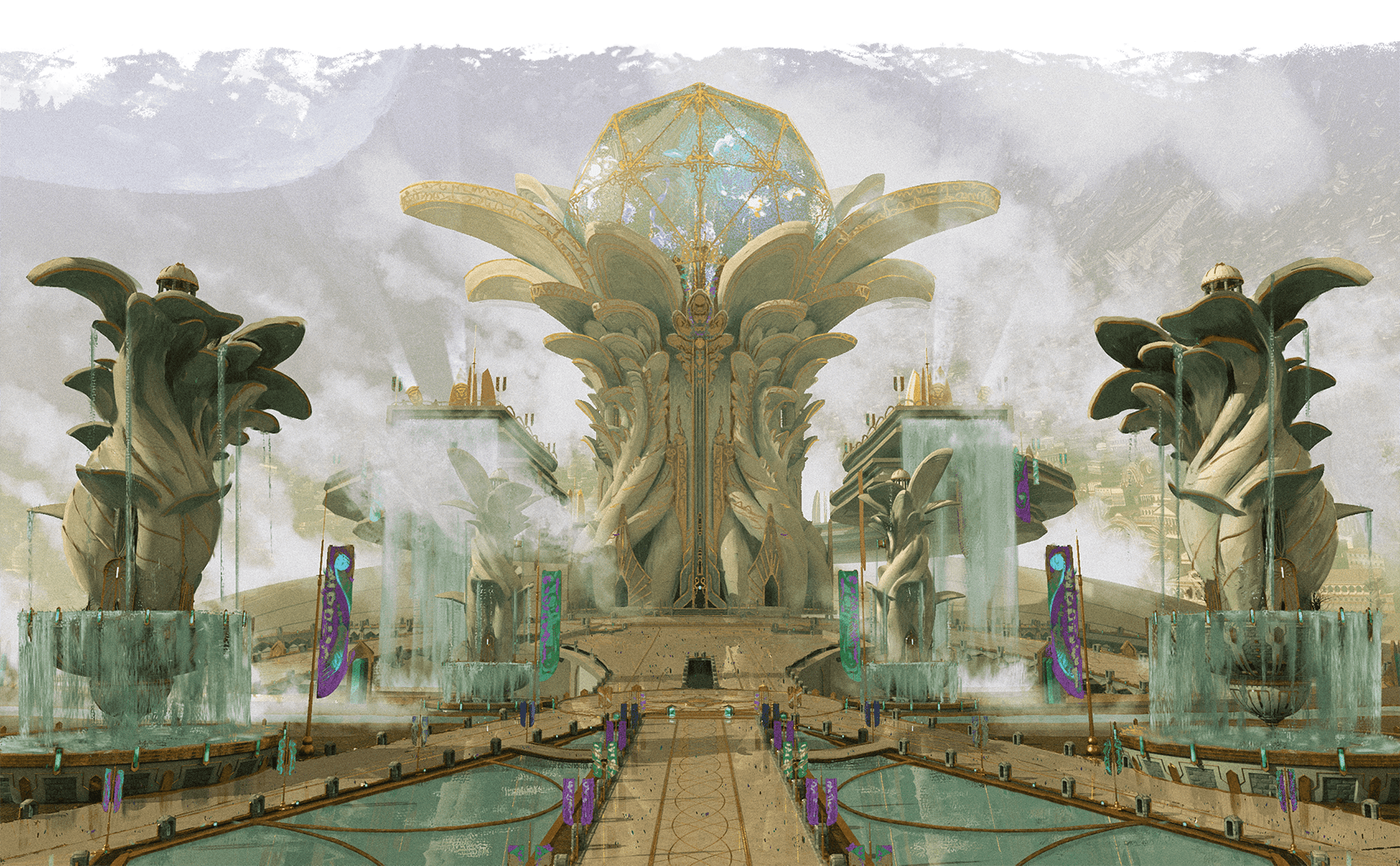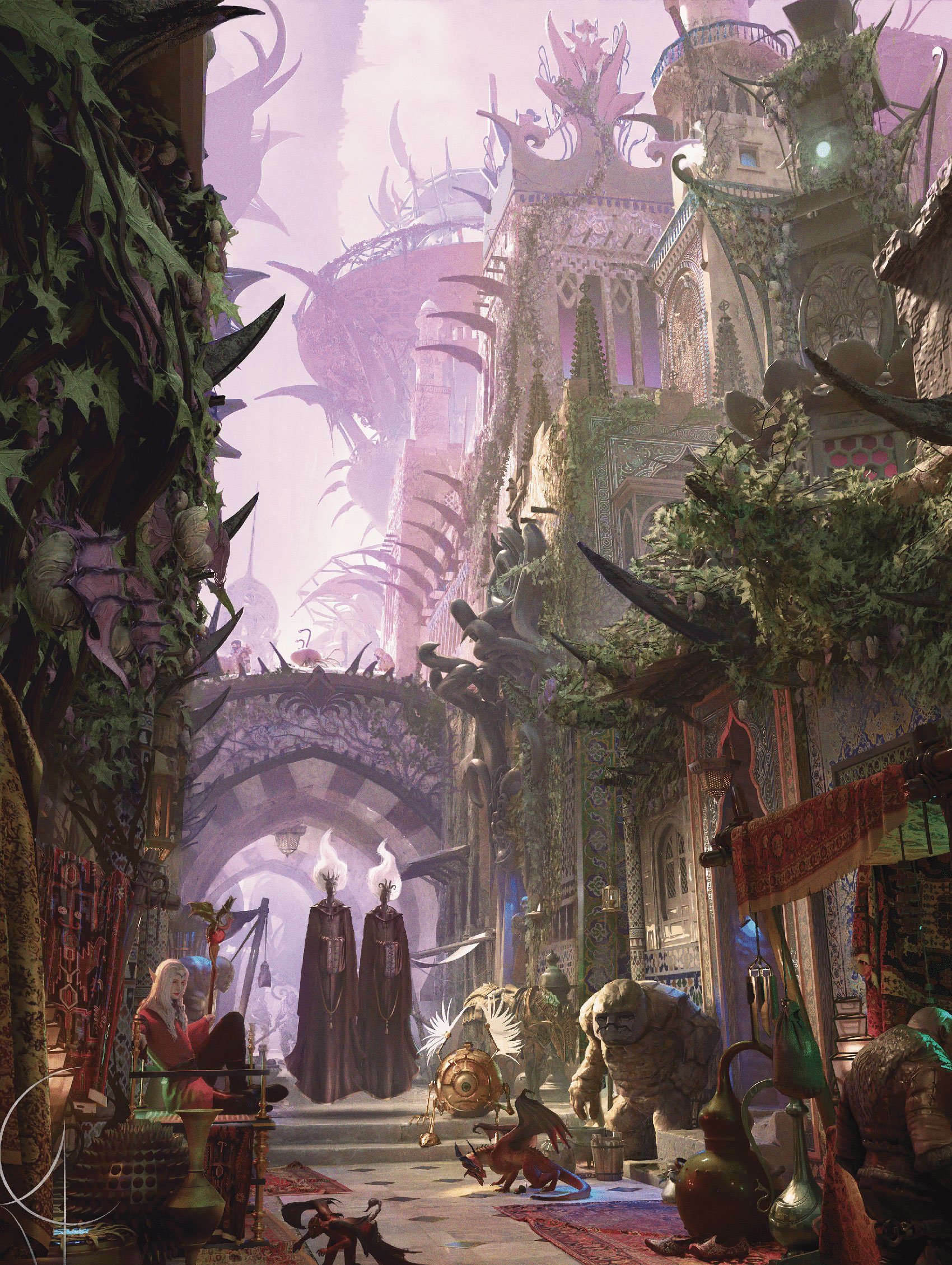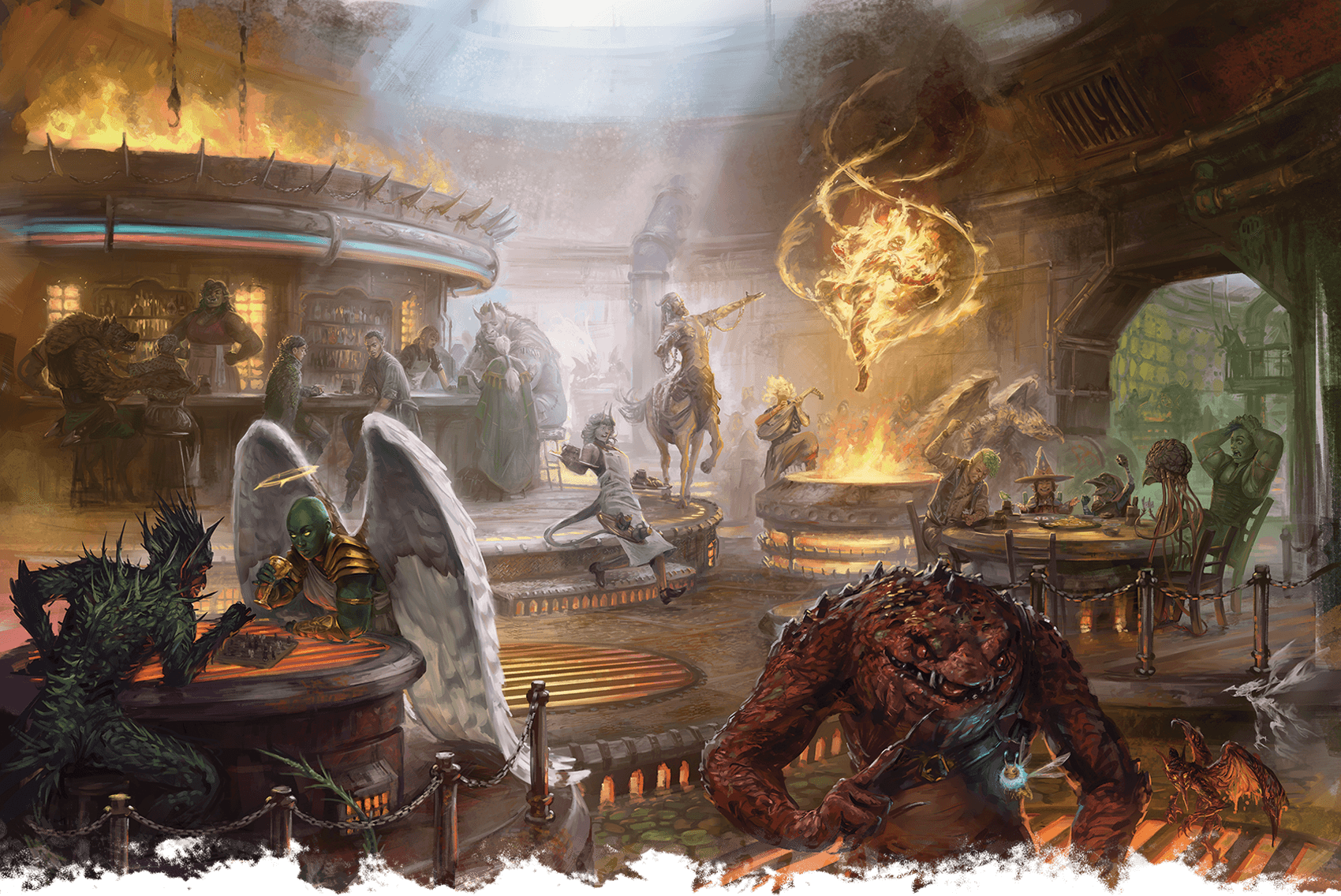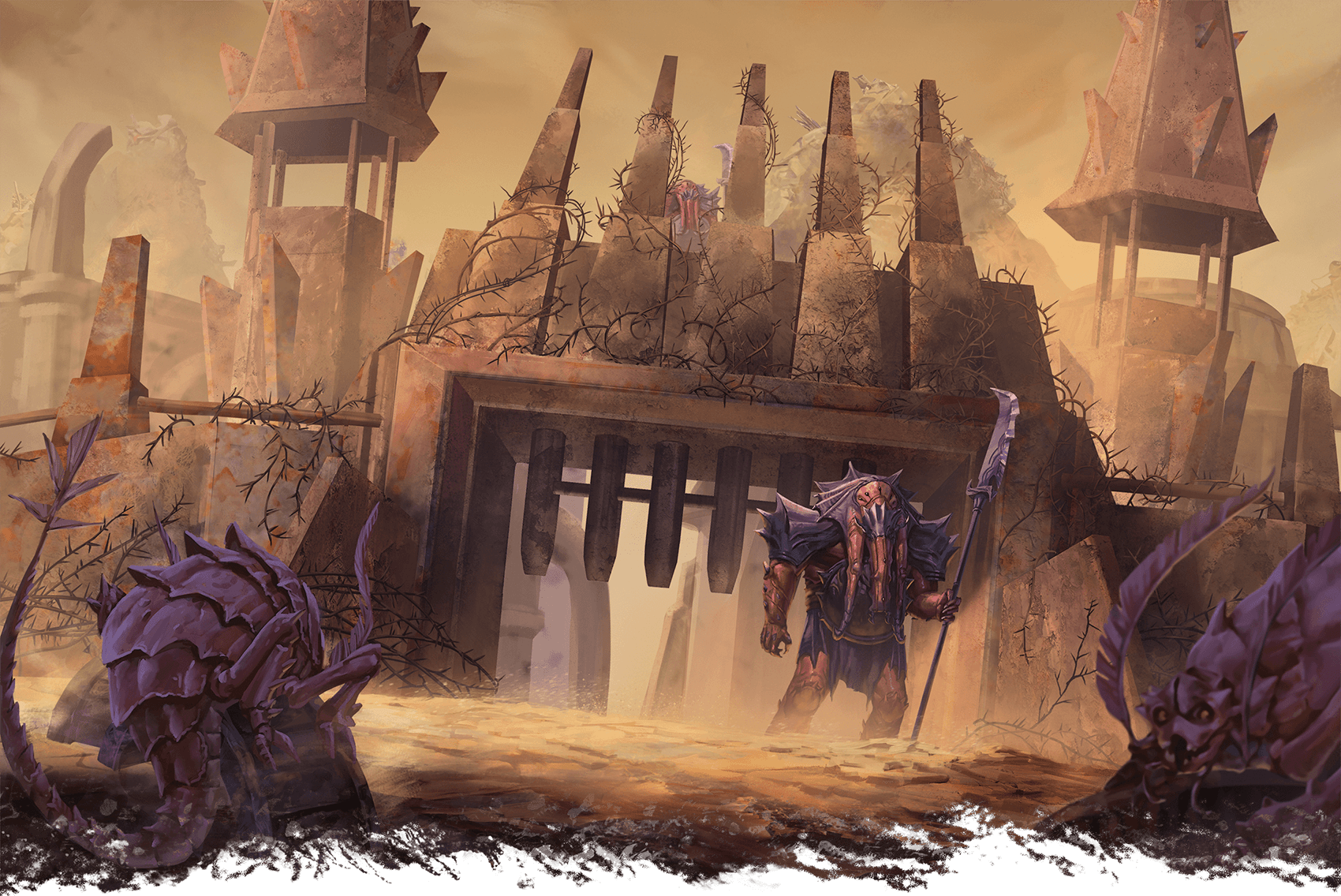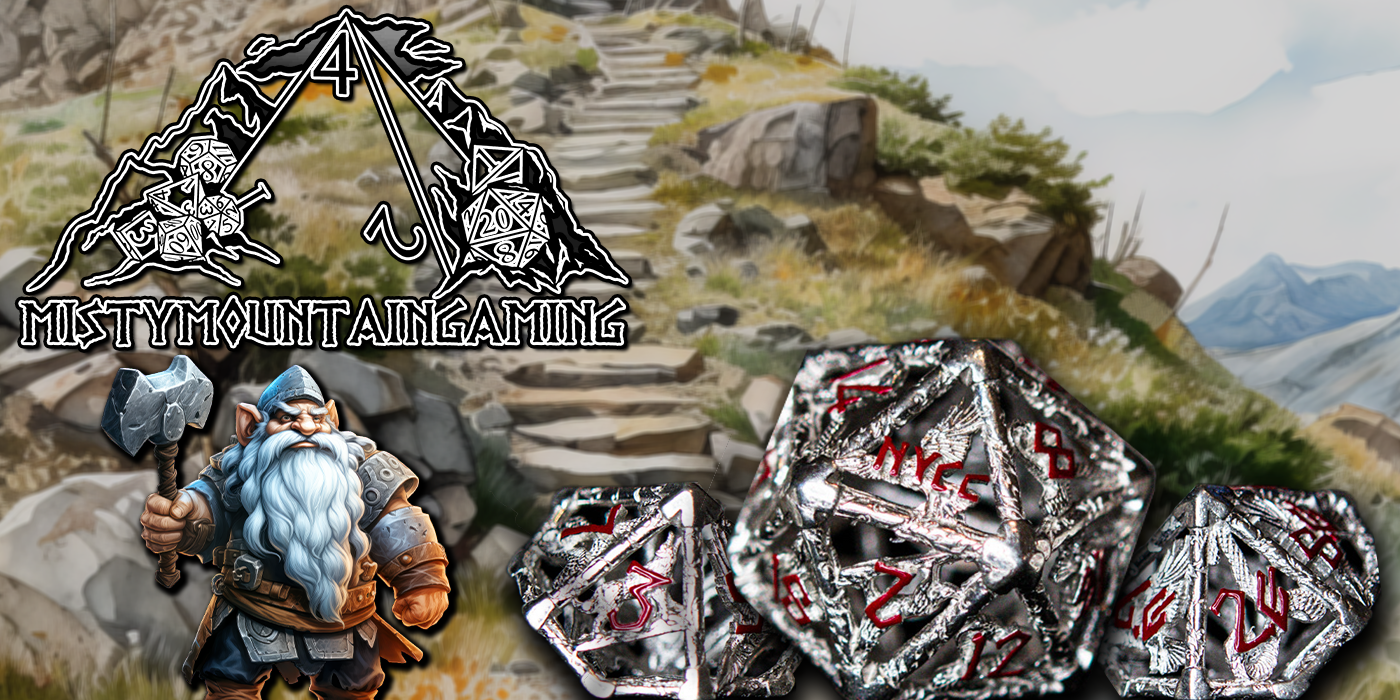D&D: ‘Planescape’ 5E – ‘Sigil and the Outlands’ First Impressions
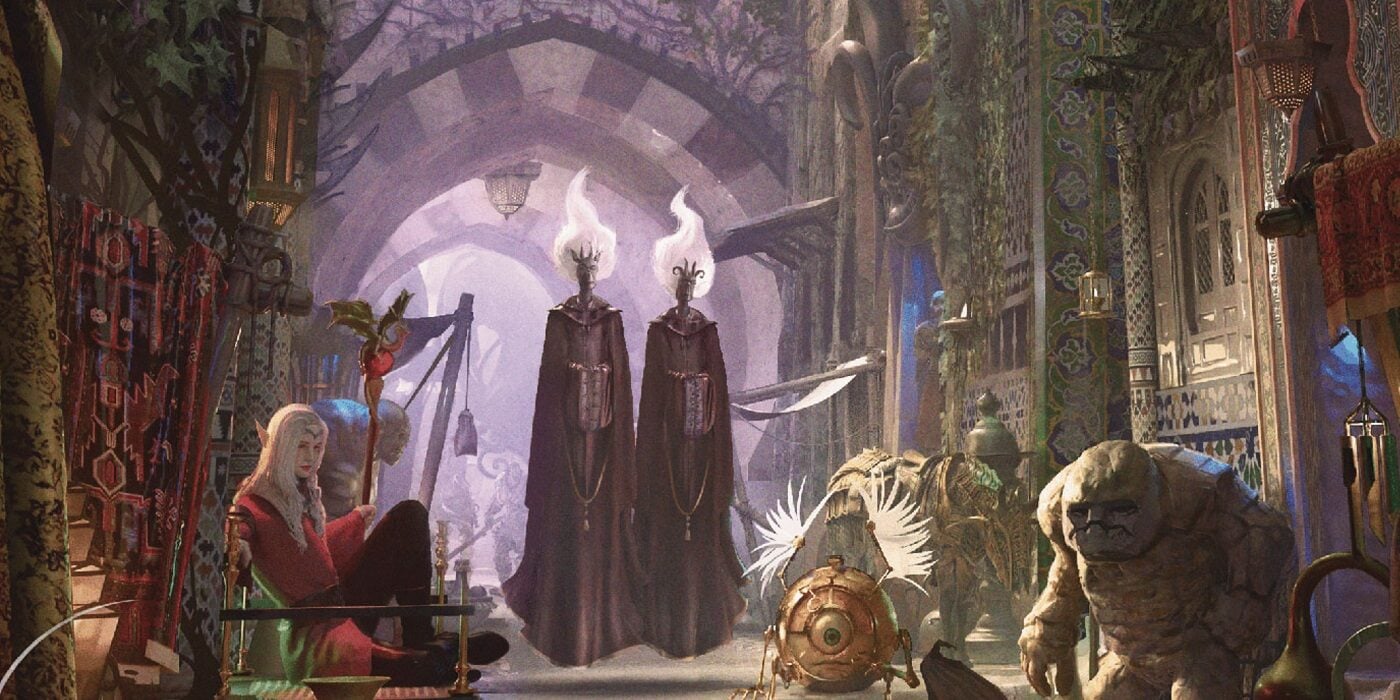
Planescape: Adventures in the Multiverse hits stores today. Here are our first impressions of D&D’s big multiverse box set.
Planescape: Adventures in the Multiverse is here at last. A return to one of D&D’s most beloved settings, and this time for 5th Edition. The campaign setting isn’t one book, but rather three (smaller than normal) books bound together in a single boxed set with a DM Screen included. In its confines, a guide to Sigil and the Outlands, a parade of planar enemies, and last but not least, an adventure that takes characters all the way to 10th level (and then to 17th).
WotC sent us the book ahead of release, and to make it easy to focus on they also helpfully released a surprise new Unearthed Arcana at the same time. But here are our first impressions of Planescape 5E.
Sigil and the Outlands
The heart and soul of Planescape 5E is the setting book, Sigil and the Outlands. In this book, WotC reintroduces Planescape to 5th Edition. Sigil has long been in the background and sidebars of text scattered throughout the DMG and PHB and other adventures. But now, it takes center stage in a 96-page book that lays out the grand scheme of the Great Wheel of the Cosmos.
In this book, we are introduced to the whole concept of Planescape. At the heart of it, the Outlands. A massive neutral plane that ties together all of reality in its great wheel. And at the center, a towering spire that stretches up into the heavens almost infinitely tall. Atop that, the City of Doors. Sigil. The center of the Multiverse.
Sigil and the Outlands condenses Planescape into three chapters: a section on Character Options, a section on Sigil, and a section on the Outlands. Of the three, Sigil gets the largest chunk. But the Outlands isn’t far behind. And both are fantastic, which is good because the Character Options section is a little lackluster in comparison.
Character Options, Optional
Unlike previous campaign settings, there are relatively few character options. It’s the thinnest section of any WotC-published campaign book yet, and it’s where Planescape 5E suffers the most. There are no new subclasses or species, and the two backgrounds introduced in this section give exact same mechanical benefit: the feat Scion of the Outer Planes, and the ability to find lodging under specific circumstances. Flavorwise, they’re both fairly similar too: you come from the Outer Planes and/or Sigil and your experience with that makes you more cosmopolitan, cosmically.
Which isn’t bad. But after books like Dragonlance which introduced backgrounds that led to narrative development, or Mythic Odysseys of Theros which gave us everyone’s 2nd favorite Paladin subclass, it feels lackluster. Even the new magic items and spells feel almost too specific. They’re more like plot devices for the included adventure than actual campaign tools, although the Gate Seal spell is a great escaping villain shutdown tool.
What does shine are the new Feats. There are seven, all in all, we got into a little more depth on them here. They give you a connection to a plane (or planes, depending on your DM) and add some interesting techniques to a character. As mentioned, it feels like Feats are the way WotC is going to add non-class dependent character options. Which is a double-edged sword since you get comparatively few feats.
Not like in 3rd Edition where you’d string together trees of Feats, even if you were a Wizard. But, these are all very interesting toys to play around with. But in many ways, this isn’t really a book for players hoping for another Tasha’s Cauldron. It’s for DMs and folks who want to explore D&D’s cosmos in the game and in their characters.
Sigil, the City of Doors
Sigil comes to Planescape 5E over the span of 45 pages of beautiful art and lush details. Right away we get a sense of how different the city is. Magic works differently here. If you cast a spell that summons a creature from another plane, you summon it from Sigil instead. This is hilarious because you might have met/meet that creature later, and then you’ll have to answer some questions.
This section is chock full of little details like that. And Sigil is still the same cosmic melting pot it’s always been. The details just get a fresh coat of paint, and some extra screen time, so to speak. There are portals everywhere, and even the enigmatic Lady of Pain gets a whole page of lore. But the meat and potatoes of this section are the faction and ward writeups. Sigil’s lifeblood is in its opposing factions whose influence waxes and wanes like phases of the moon (as long as it never upsets the Lady of Pain)). All the old faves are here:
- Athar
- Bleak Cabal
- Doomguard
- Fated
- Fraternity of Order
- Hands of Havoc
- Harmonium
- Heralds of Dust
- Mercykillers
- Minds Eye
- Society of Sensation
- Transcendent Order
And then there are the Wards. These are the districts of Sigil. This is where you’ll find the locations NPC quest ideas and encounters that make Sigil feel like Sigil. Every section feels distinct, rich, and ready to run. You could set an adventure in any of these in a heartbeat.
The artwork shows off the best part of this. Sigil is a fantasy city where all of it comes crashing together. Giants work as guards. Demons own bars where angels work as servers. The mundane and the mythological come crashing headlong into each other here, and both of them have to get their hands dirty because that work won’t do itself. And Sigil is always turning.
The Outlands
This is the part of Planescape that you could just fall into. The Outlands is a disk-shaped plane of perfect neutrality where anything and everything can go. Because it’s where the cosmos all sort of come together. Every aspect of the Outer Planes is represented somewhere in the Outlands. After all, they’re a place where anything and everything can flourish. Here, one can find arid, flame-scarred plains giving rise to heroic mountain ranges sculpted in the likenesses of gods, and then some.
But they’re also not necessarily fixed. Because the Outlands are also subject to cosmic D&D realignment. If a location embodies the nature of an Outer Plane too much it gets absorbed by that plane, vanishing from the Outlands (which then realigns to rebalance itself).
Instead of different planes, the Outlands section details the Gate-Towns. Each Gate-Town is a town constructed around a portal to one of the Outer Planes, which are shaped by the planar energies that flow through these gates. And though they’re described as “towns” they’re more like regions. In Automata, the Clockwork influence of Mechanus reigns, while Excelsior is awash with influences from the energies of the Seven Heavens of Mount Celestia.
Each place has its own encounters and effects. The only thing that feels like it’s missing is what you’ll find outside of the Gate Towns. There are two pages that very briefly (like a paragraph or two for each) detail a few other locations in the Outlands, and I think the book suffers for it. DMs hoping for more will have to do the work themselves.
Final Thoughts
All in all, though, the book is grand. It paints Sigil and the Outlands in an exciting light. And though it is woefully thin in some places, there’s still enough here to get you going in any direction. If there’s one inexcusable crime, though, it’s that nowhere in the book that describes the heart of the city, will you find the word “berk”.
Check back later this week as we go through Morte’s Planar Parade and Turn of Fortune’s Wheel!

